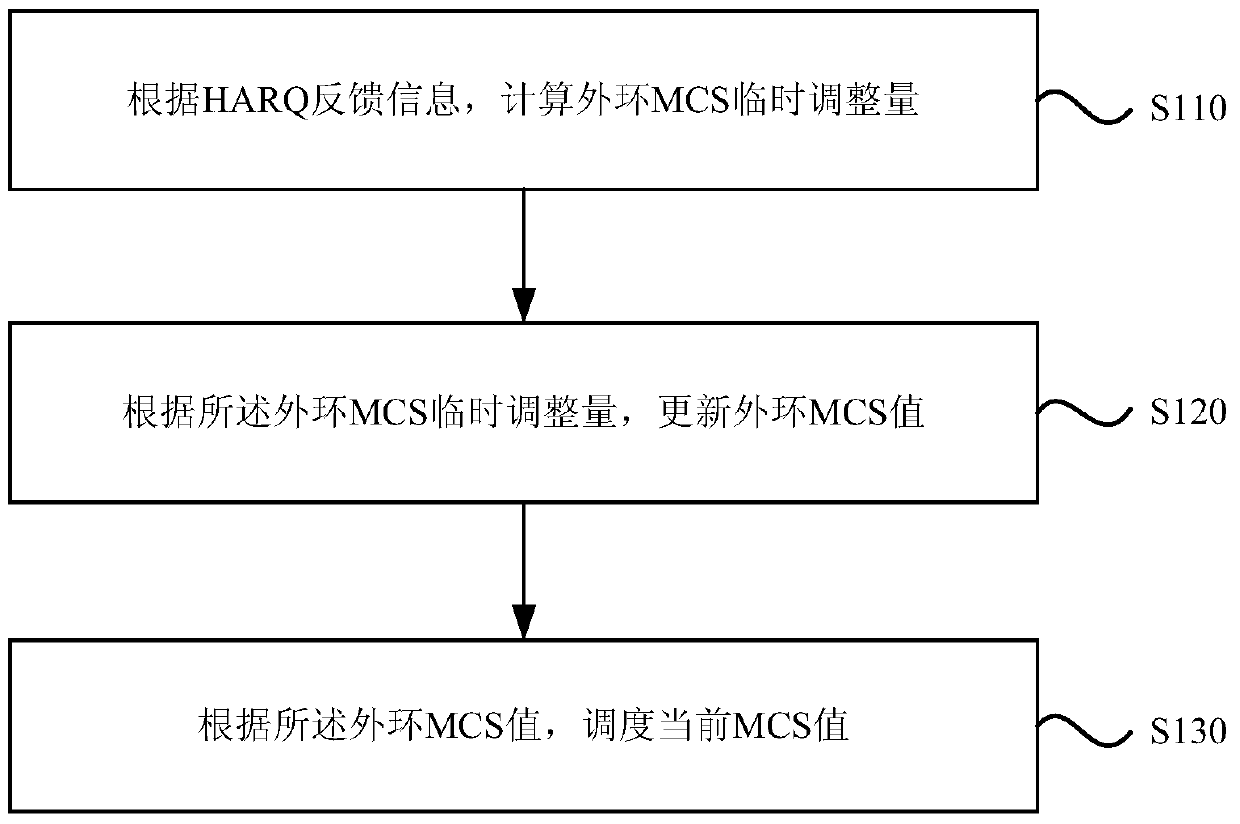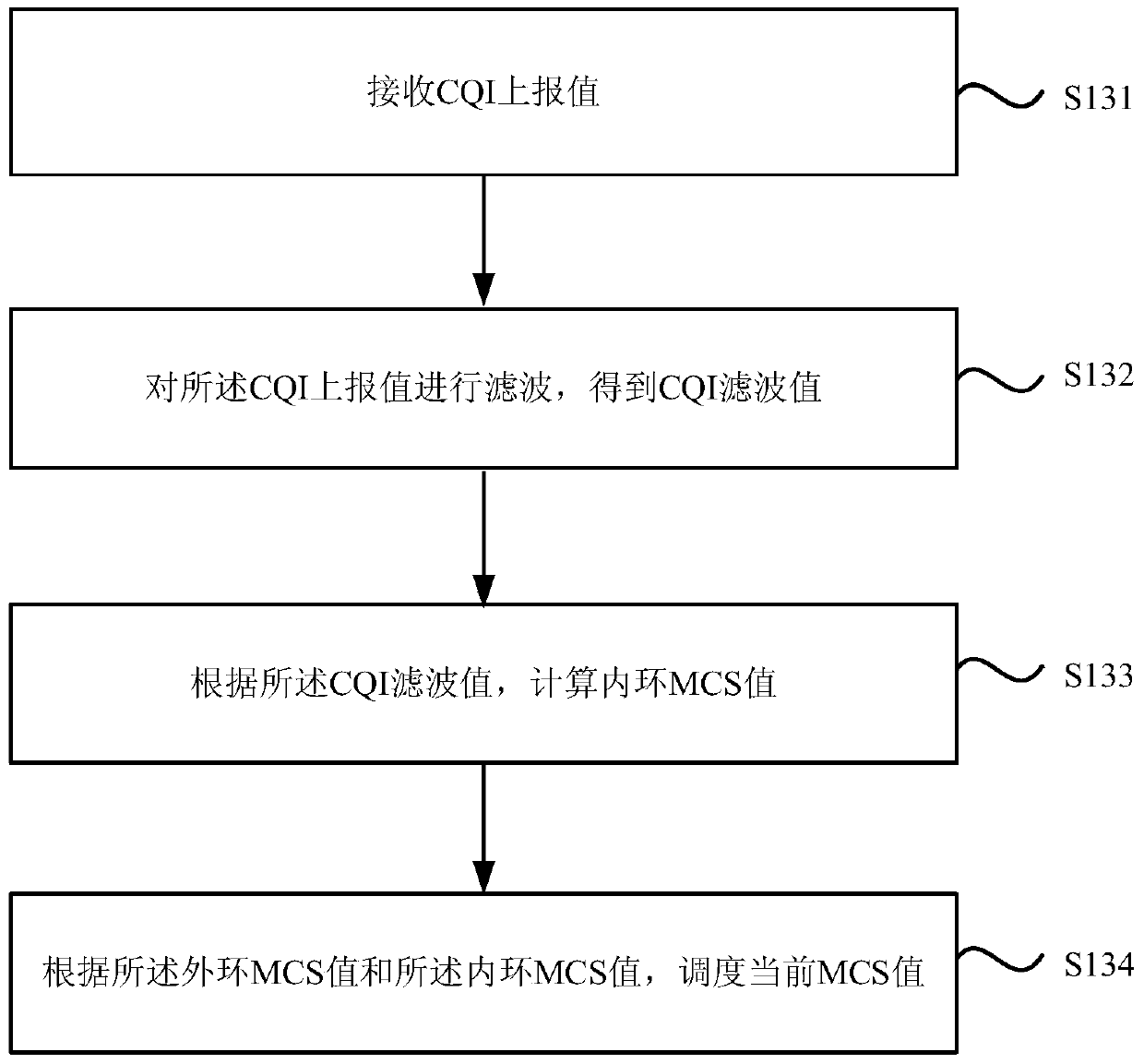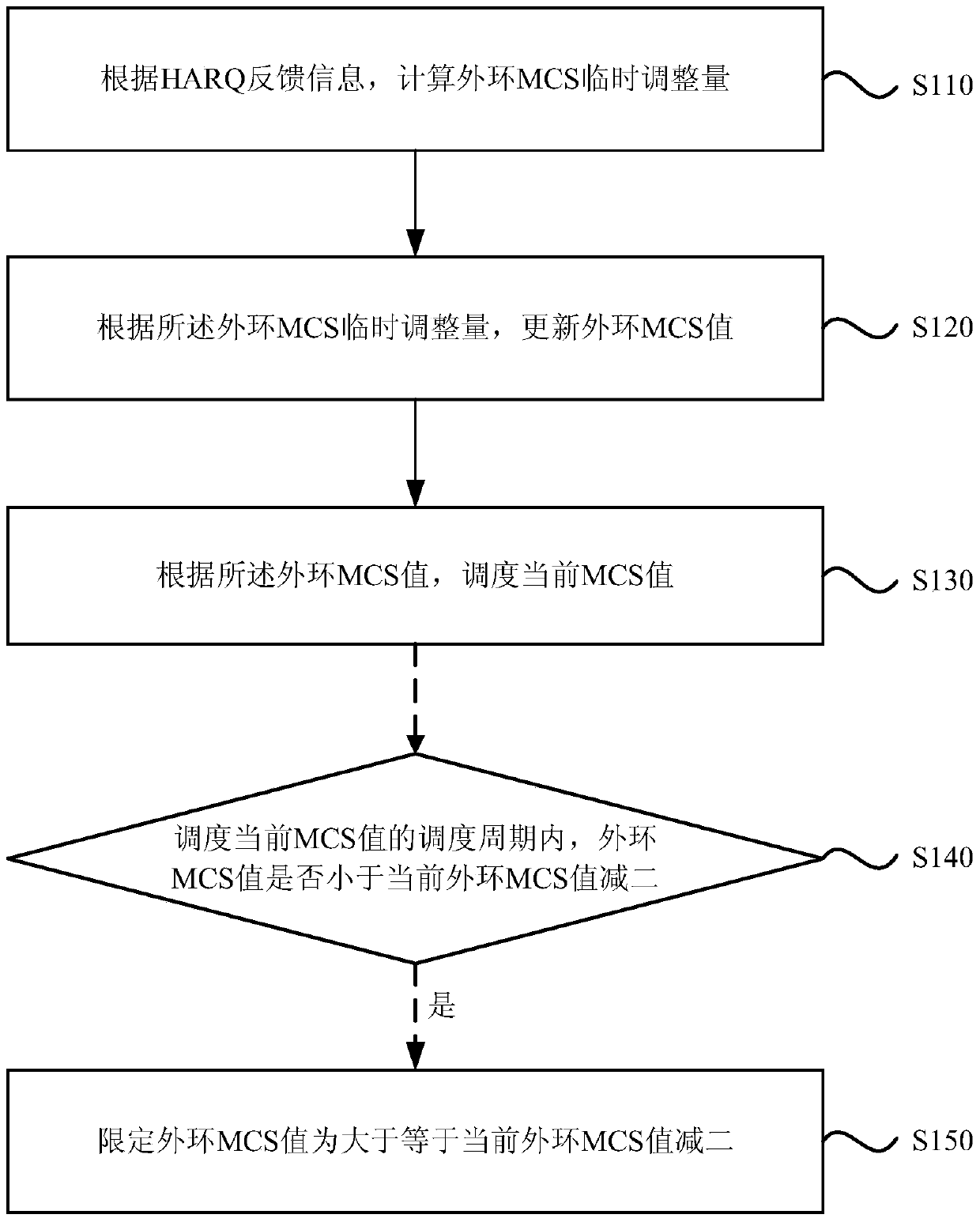Method and system for dispatching mcs in harq binding mode
A binding mode and adjustment technology, which is applied in transmission systems, digital transmission systems, and transmission rate adjustments, can solve problems such as lowering the MCS value, achieve the effect of improving the transmission rate of downlink services and ensuring the reliability of downlink service transmissions
- Summary
- Abstract
- Description
- Claims
- Application Information
AI Technical Summary
Problems solved by technology
Method used
Image
Examples
Embodiment 1
[0018] Such as figure 1 As shown, the embodiment of the present invention provides a method for scheduling MCS in the HARQ-ACK / NACK bundling mode, the method can be applied in a TDD-LTE mobile communication system, and the method includes the following steps:
[0019] S110. Calculate a temporary adjustment amount of the outer loop MCS according to the HARQ feedback information.
[0020] The HARQ feedback information includes information such as ACK, NACK or Discontinuous Transmission (DTX) fed back by the UE. During the implementation of this step, the eNB can notify the UE of cell parameter configuration through a broadcast message, and the eNB can set the initial MCS value to schedule downlink services; UE According to the initially scheduled MCS value, the information such as ACK, NACK or DTX demodulated under the MCS value is counted, and then the physical uplink control channel (Physical Uplink ControlCHannel, PUCCH) or the physical uplink shared control channel (Physical...
Embodiment 2
[0042] Please refer to figure 2 , which is a flowchart of a method for scheduling the current MCS value according to the outer-loop MCS value provided by the embodiment of the present invention. This embodiment further provides step S130 of Embodiment 1, that is, according to the preferred implementation mode of scheduling the current MCS value according to the outer ring MCS value, step S130 may specifically include:
[0043] S131. Receive a CQI report value CQI_rpt.
[0044] S132. Filter the CQI reported value to obtain a CQI filtered value.
[0045] For users who have a new CQI report value arriving, the CQI report value can be filtered according to formula (5),
[0046] CQI_flt(n)=(1-α)×CQI_flt(n-1)+α×CQI_rpt (5)
[0047] In formula (5), CQI_flt(n) and CQI_flt(n-1) represent the CQI filter values of the nth and n-1th subframes, n is a positive integer greater than or equal to 2, and α is a filter factor.
[0048] For the user whose CQI report value arrives for the f...
Embodiment 3
[0057] The current outer ring MCS value is obtained from Embodiment 1. In the downlink dual-stream transmission and HARQ-ACK / NACK binding mode of the TDD LTE system, if a 2-bit NACK message is received in the current subframe, the base station considers that each downlink stream has four The demodulation results on each bound subframe are all NACK. According to step S110 in the first embodiment, it can be calculated that outerMCS_tmp is equal to -4, that is, the current outer ring MCS value must be reduced by at least 4 steps, which may cause the MCS value scheduled by the base station to be Therefore, this embodiment provides a preferred implementation for subsequent adjustment of the MCS value of the outer ring.
[0058] Please refer to image 3 , which is a flow chart of the method for adjusting the MCS value of the outer loop within the current MCS value scheduling period provided by the embodiment of the present invention. The main difference between this embodiment and ...
PUM
 Login to View More
Login to View More Abstract
Description
Claims
Application Information
 Login to View More
Login to View More - R&D
- Intellectual Property
- Life Sciences
- Materials
- Tech Scout
- Unparalleled Data Quality
- Higher Quality Content
- 60% Fewer Hallucinations
Browse by: Latest US Patents, China's latest patents, Technical Efficacy Thesaurus, Application Domain, Technology Topic, Popular Technical Reports.
© 2025 PatSnap. All rights reserved.Legal|Privacy policy|Modern Slavery Act Transparency Statement|Sitemap|About US| Contact US: help@patsnap.com



